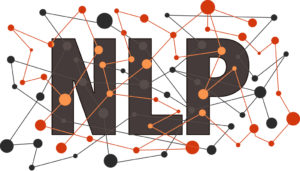

(lassedesignen/Shutterstock)
As data continues to pile up, enterprises that maintain flexible approaches to managing and mining that data are the ones most likely to achieve competitive success, according to Gartner, which recently released its top 10 analytics technologies and trends for 2019.
The Global Datashere currently measures 33 zettabytes, according to a recent IDC report, and is predicted to grow to 175 zettabytes by 2025. Navigating this data deluge is no simple matter, as the volume and velocity exceeds the capabilities of existing data analytics rigs running atop legacy architectures.
“The size, complexity, distributed nature of data, speed of action, and the continuous intelligence required by digital business means that rigid and centralized architectures and tools break down,” explains Donald Feinberg, vice president and distinguished analyst at Gartner. “The continued survival of any business will depend upon an agile, data-centric architecture that responds to the constant rate of change.”
So, just what composes an “agile, data-centric architecture”? That, of course, is the $64,000 question. Nobody knows for sure, of course, but Feinberg and other Gartner analysts took a gander at the topic, and shared what they believe to be the top 10 data analytics and technology trends that will be making headlines in 2019. (Spoiler alert: Blockchain hype appears to be fading fast.)
Top 10 Tech
The number one analytics tech trend on Gartner’s list is augmented analytics, which the analyst firm describes as the use of machine learning and AI to transform how analytics content is developed, consumed, and shared.
“By 2020, augmented analytics will be a dominant driver of new purchases of analytics and BI, as well as data science and ML platforms, and of embedded analytics,” Gartner writes. “Data and analytics leaders should plan to adopt augmented analytics as platform capabilities mature.”
The augmented theme continued with number two on the list: augmented data management. Gartner says that ML and AI technologies are impacting how enterprises manage data quality, integration, metadata, and master data.
“It is automating many of the manual tasks and allows less technically skilled users to be more autonomous using data,” the company writes. “It also allows highly skilled technical resources to focus on higher value tasks.
Continuous intelligence is the third major trend. Also known as real-time analytics, this trend encompasses all activities related to harnessing “real-time context data” to improve decision making.
AI has an explainabilty problem, as we’ve documented in these virtual pages on more than one occasion. That’s why breaking the “black box” nature of complex ML and deep learning models is so critical, and why Gartner made it number four on its list.
Graph analytics isn’t new, but the technologies and techniques behind graph are very well aligned to solving the big data challenges enterprises face today and in the future. Thanks to graph analytics’ capability to allow you to ask “complex questions across complex data,” Gartner sees graph growing at a healthy 100% CAGR clip through 2022.
Number six on Gartner’s list is big data fabrics, which represent an emerging way to establish consistency across diverse and distributed data environments. However, the static nature of today’s bespoke data fabric architectures will necessarily give way to more dynamic approaches, which will necessitate redesigns, the analyst firm predicts.
Like chatbots? So does Gartner, which sees big things for the future of natural language processing and conversational interfaces. Fueled by big data collections and neural networking advances, Gartner says 50% of analytical queries will run through a NLP, voice, or search interface by 2020.
Data scientists predominantly conduct their ML and AI work via open source software platforms today. But by 2022, 75% of that work will be done using commercial solutions, predicts the Gartner.
Okay, blockchain is still on Gartner’s radar, thanks to the “significant ramifications” for analytics use cases. But at number nine of the 10 most impactful analytics technologies and trends, it’s fair to say that Gartner isn’t too bullish on blockchain’s short term impact.
Rounding out the top 10 is persistent memory servers, which Gartner defines as “representing a new memory tier between DRAM and NAND flash memory that can provide cost-effective mass memory for high-performance workloads.”
We have been watching the capabilities of in-memory databases and in-memory data grids (IMDGs) advance in the past few years. With more data than ever to process, enterprises are welcoming the bigger memory and storage tiers, to go along with today’s speed processors.
Keeping up with technology trends is not easy in the analytics world. It wasn’t long ago that analysts were praising the idea of big centralized clusters (hello, Hadoop?) that could house all of an enterprise’s data. But today, enterprises are looking at bringing a much more diverse and distributed set of tools and technologies to bear on the ever-growing morass of data that sits before them.
“The story of data and analytics keeps evolving, from supporting internal decision making to continuous intelligence, information products and appointing chief data officers,” Rita Sallam, research vice president at Gartner, said during the Gartner Data & Analytics Summit last week in Sydney, Australia. “It’s critical to gain a deeper understanding of the technology trends fueling that evolving story and prioritize them based on business value.”
Related Items:
Data Growth Rate in U.S. Predicted to Slow
What Gartner Sees In Analytic Hubs
Gartner Sees AI Democratized in Latest ‘Hype Cycle’
November 22, 2024
- DataOps.live Achieves SOC 2 Type II Compliance
- LogicMonitor Gains $800M in Strategic Investment to Scale Global Operations
November 21, 2024
- Snowflake Agrees to Acquire Open Data Integration Platform, Datavolo
- Denodo Platform 9.1 Brings New Advanced AI Capabilities and Enhanced Data Lakehouse Performance
- Teradata AI Unlimited in Microsoft Fabric Public Preview Now Available Through Microsoft Fabric Workload Hub
- Zilliz Cloud Powers GenAI Readiness with Cost-Effective Enterprise-Grade Performance and Scalability
- Snowflake and Anthropic Team Up to Bring Claude Models Directly to the AI Data Cloud
- Duality AI Launches EDU Subscription to Empower Aspiring AI Developers with Digital Twin Simulation and Synthetic Data Skills
- Striim Offers Mirroring Solution for SQL Server to Fabric at Microsoft Ignite
November 20, 2024
- Anaconda Unites Teams Across Data Skill Levels With Anaconda Toolbox for Excel
- StarTree Unveils Innovations to Tackle Real-Time Data Scaling Challenges
- Introducing Crunchy Data Warehouse, a Modern Postgres Analytics Platform
- Zettar Advances Data Movement in Collaboration with MiTAC Computing and NVIDIA
- Matillion Leverages Simbian’s AI to Streamline Security and Boost Efficiency
- CData Launches Free Connect Spreadsheets Product to Simplify Access to Enterprise Data for Excel and Google Sheets Users
- Graphwise Introduces GraphDB 10.8 with Multi-Method RAG for GenAI Applications





























